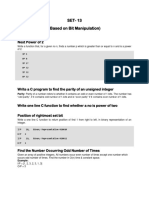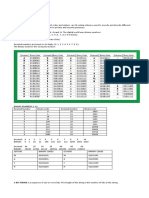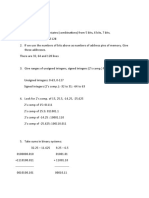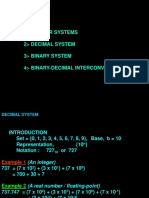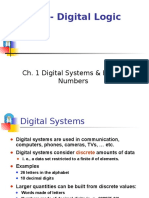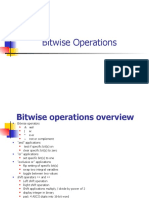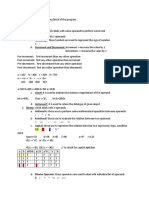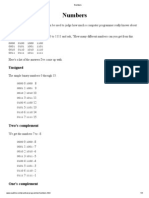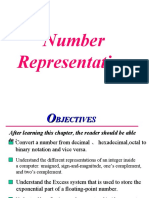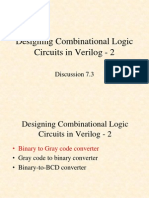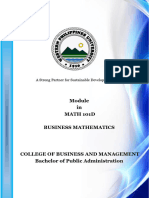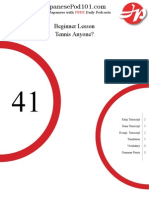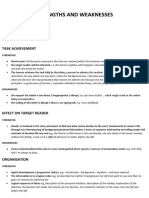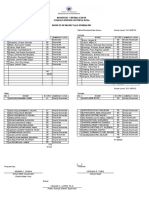0% found this document useful (0 votes)
13 views68 pagesBit Wise Operator
The document provides an overview of bitwise operators in C, including their definitions and laws. It explains binary to decimal and decimal to binary conversions with examples, as well as how to determine if a number is odd or even using bitwise operations. Additionally, it includes functions for printing bit patterns and setting bits in integers.
Uploaded by
howriculousCopyright
© © All Rights Reserved
We take content rights seriously. If you suspect this is your content, claim it here.
Available Formats
Download as PDF, TXT or read online on Scribd
0% found this document useful (0 votes)
13 views68 pagesBit Wise Operator
The document provides an overview of bitwise operators in C, including their definitions and laws. It explains binary to decimal and decimal to binary conversions with examples, as well as how to determine if a number is odd or even using bitwise operations. Additionally, it includes functions for printing bit patterns and setting bits in integers.
Uploaded by
howriculousCopyright
© © All Rights Reserved
We take content rights seriously. If you suspect this is your content, claim it here.
Available Formats
Download as PDF, TXT or read online on Scribd
/ 68





